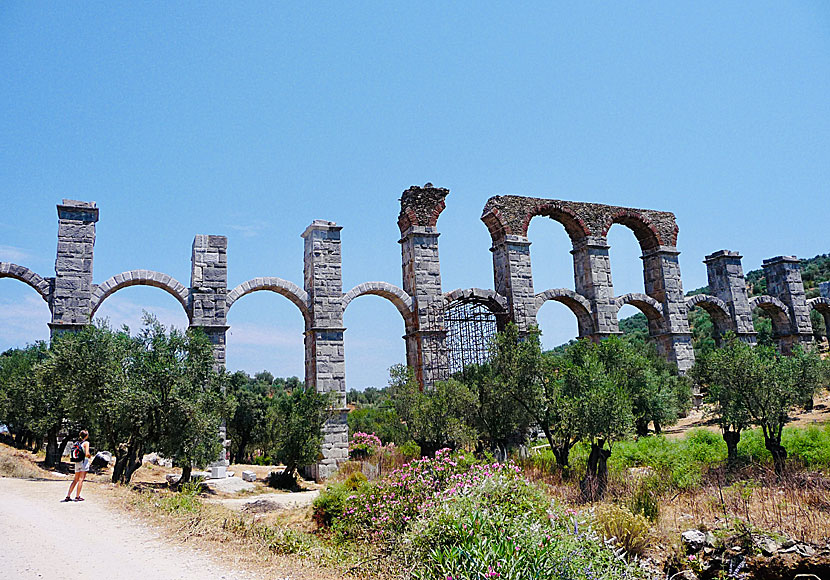
 |
| ISLANDS A-Z | CRETE | CYCLADES | DODECANESE | EASTERN AEGEAN |
| IONIAN | SARONIC | SPORADES | MAINLAND | ABOUT US |
Kremasti bridge & the Roman aqueduct |
|
Six kilometers north of Mytilini is a small village called Moria. 600 meters west of the village there is a Roman aqueduct that was built between 200-300 AD. The aqueduct is a masterful piece of construction and is very impressive.
 The Roman aqueduct. You see how big it is compared to Camilla standing to the left.
The magnificent Roman aqueduct from another angle.
The aqueduct supplied water to Mytilini, which is 6 kilometers away, as well as to other nearby villages. It is almost unimaginable that you could create a construction like this so many years ago. Wondering if it would be possible to build one today? The aqueduct is 170 meters long and consists of 17 arches.
Three of a total of 17 arches. |
|
The aqueduct is located before Moria, but you have to enter the village to get there. The streets of Moria is narrow so it's a little tricky to drive. The aqueduct is signposted, ask for the way if you do not see them.
The narrow streets of Moria leading (see red arrow) to the Roman aqueduct.
North of the salt marsh of Kalloni Salt Pans lies a village called Agia Paraskevi. In the village there is an interesting olive oil museum. It is housed in an old factory which was renovated in 2006. Open every day except Tuesdays. Just north of Agia Paraskevi there is an old stone bridge called Kremasti bridge. The bridge is 8.5 metres high and is considered to be one of the best preserved medieval stone bridges in Greece.
Kremasti bridge near the village of Agia Paraskevi. |
WHAT YOU MUST NOT MISS WHEN YOU ARE IN THE AREA |
READ MORE ABOUT LESVOS |
||||||
| About Lesvos | Getting here | Getting around | Villages | Beaches | Sights | Hotels |
HOME |
ABOUT US |
SEARCH |
BOOK HOTEL |
GREEK ISLANDS |
SWEDISH
|
|
© 2007-2025 | Janni Eklund | Kalispera and Kalimera. |